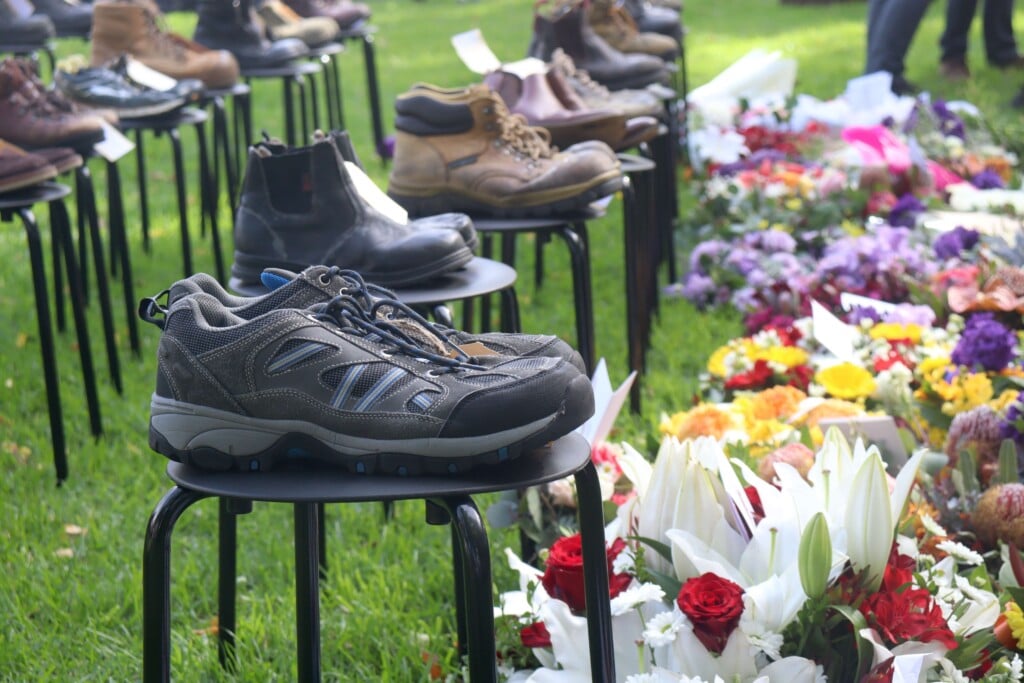There is always support available. For 24 hour 7 day mental health support call:
-
Lifeline – 13 11 14
-
Beyond Blue – 1300 22 4636
-
Suicide callback service – 1300 659 467
CW: Physical injuries and death; mention of suicide
On 24 April 2013, workers in Bangladesh were sent into a building known to be unsafe. Within 90 seconds, the building collapsed on them.
More than 1,100 people were killed. They were mostly young women and children working in the garment industry.
One of those workers was Rupali Akter who was trapped in the building and found after 18 hours.
“With all the experience of the traumatic physical and mental wounds, now I don’t want any more Rana Plaza or any more deaths in any corner of the world,” Rupali said to mark the tenth anniversary of the Rana Plaza collapse.
“We need a safe factory. We need to be together.”
Remember the dead…
International Workers Memorial Day on 28 April is when union members come together to remember workers who have died at work or because of their work.
As the story from Bangladesh shows, workplace deaths touch people around the globe. In Australia, we mourn the 36 workers who have lost their lives to workplace incidents so far this year.

United Workers Union coordinator of Allied Industries, Belinda Jacobi, spoke about what she witnessed in her 15 years on the shop floor.
“I saw one man lose his arm completely. I saw another worker, a cleaner, caught in a machine, fingers amputated… I didn’t work in a petrochemical plant or the dangerous construction industry. I worked in a food processing plant. Poultry.”
Not all workplace deaths happen immediately. Suicide and deaths from disease often take place at home or in a hospital bed.
It’s important to remember that the threat of asbestos is still with us. Australia has one of the highest measured incidence rates of mesothelioma in the world: on average, two people are diagnosed with mesothelioma in Australia each day.
We also take time to think of the Australian workers who have been devastated by the impacts of the deadly dust released from working with engineered stone. As many as one in four stonemasons who work with engineered stone products have contracted silicosis.
…and fight like hell for the living
The message is simple: every worker has the right to a safe and healthy working environment and every employer must ensure they eliminate risks at work. Every injury and death is preventable.
Belinda Jacobi also described how the union movement is fighting the “new silent disease” of mental health injuries.
“It’s an injury you don’t see in an MRI. You don’t see blood on the floor,” she said.
Workplace health and safety is as much about mental health as it is about physical health. That’s why union members are trained and equipped to make sure no worker has to suffer in silence.
Silica dust is another cause of workplace deaths that is difficult to trace. Workers breathe in the incredibly fine dust particles, often when working with engineered stone.
But although invisible, silica dust is deadly and can lead to diseases such as silicosis. No one should have to die for a fashion item. A ban on engineered stone is crucial to saving workers’ lives.












SHARE:
The workers who didn’t make it home